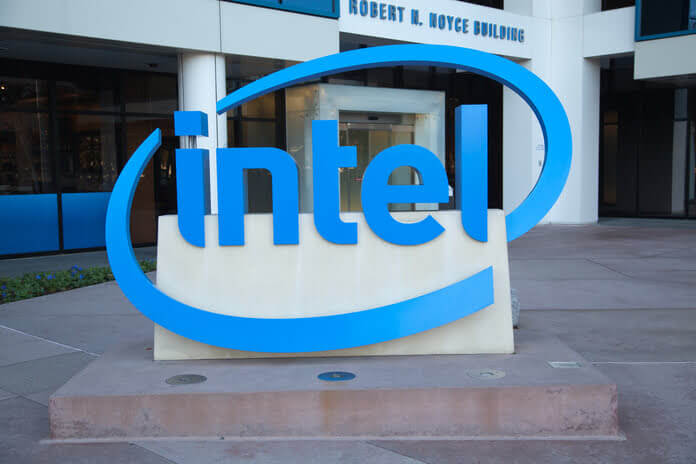The recession in the economy has caused customers to prioritize spending their money on essentials rather than on technological items like Intel stock, which has had a negative impact on semiconductor companies. During moments of high inflation, when mortgage rates have reached their highest levels since the financial crisis in 2008, it is of the utmost importance to have access to affordable food, clothing, and a place to live.
Intel Stock Momentous Event
Due to the very cyclical nature of the semiconductor business, the present market situation is particularly hazardous for shares in this sector. Nevertheless, the fall in Intel stock has been somewhat of a momentous event. Throughout the last five years, investors have witnessed Intel’s competitor, Advanced Micro Devices (AMD), grow in prominence while simultaneously stealing away market share from Intel Corporation (NASDAQ:INTC).
With this information, the question arises: Is Intel stock still a value at its present price, or has it become a value trap?
In order to provide a more in-depth response to the question, let’s take a more in-depth look at the fundamentals and prospects of INTC.
Intel’s stock price has dropped by -47% so far this year, which is almost twice as much as the S&P 500’s decrease of -24%. However, this has been the case for the Semi-General Market as a whole, with INTC’s Zacks Subindustry down by -48% Year to Date (YTD) and AMD declining by -52%.
The decline of Intel began quite a few years ago, despite the fact that the market climate for semiconductor companies is now negative. The performance difference between Intel and AMD is staggering, as the figure on the right demonstrates. In comparison, INTC has seen a loss of 29% over the past five years, while AMD has seen an astounding increase of 434%.
As AMD and Intel began vying for market share for PC and server CPUs, the price-performance chart is also symbolic of AMD stealing market share away from Intel. Investors and analysts took note of the fact that AMD exceeded Intel in terms of the market cap during the second quarter, which intensified their concerns regarding the possibility that Intel has become a value trap.
Due to Intel’s disappointing financial performance during the second quarter, Advanced Micro Devices (AMD) was able to formally exceed INTC in terms of market cap. In the second quarter, INTC reported earnings of $0.29 per share, which was 58% lower than what was expected. This constituted a 78% decline from the previous quarter’s revenue, which was also down 22%, according to GAAP.
Outlook
According to projections provided by Zacks, profits for the third quarter are anticipated to fall by 80% from the previous year and come in at $0.34 per share. Additionally, it is anticipated that revenues would decrease by 19% to reach $15.57 billion during the third quarter.
In 2022, it is anticipated that INTC’s annual earnings will fall by 59% from the previous year’s total, but it is anticipated that these earnings will increase by 16% in 2023. It is anticipated that the top line will increase in FY23 by 3%, with sales reaching $68.23 billion, whereas it is anticipated that sales will decrease by 15% this year.
During the release of its financial report for the second quarter, Intel said that the continuation of unfavorable market circumstances significantly impacted its Client Computing, Datacenter, and AI Groups. It is important to note that the business did emphasize the fact that its Network, Edge Group, and Mobileye segments earned record quarterly sales.
Pat Gelsinger, the CEO of Intel, stated that the business’s performance during the second quarter fell short of expectations and that the company must and will do better for its shareholders. Intel has just released its 13th-Gen CPU and increased the size of its developer cloud in an effort to improve its chances of competing with AMD and Nvidia NVDA, its two main competitors.
Valuation
INTC has a forward P/E of 11.9X, which is still higher than the industry average of 10.6X, despite the fact that its share price is at $27. This is closer to the median of 12.1X than it is to the high of 16X that occurred during the previous five years.
Despite the low P/E ratio, the earnings per share (EPS) estimate revisions for INTC have continued to move downward over the past 60 days. As can be seen in the figure that follows, the market average for ahead EV/EBITDA is 11.8X, which is significantly higher than INTC’s forward ratio of 4.81X. This is one factor that works in INTC’s favor. This suggests that Intel possesses a robust balance sheet, having access to cash as well as a favorable overall debt-to-asset ratio. Additionally, this is the lowest that Intel’s EV/EBITDA has been in the past 20 years.
During this time of economic instability in the semiconductor sector, Intel’s low EV/EBITDA ratio is extremely important.
Bottom Line
Even at the present price, Intel’s stock appears to be more of a value trap, which is unfortunate for both the company and its stockholders. Because of the downward trend in earnings estimate revisions and the challenging market environment for semiconductor stocks, INTC presently has a Zacks Rank of 5, which indicates a strong recommendation to sell the company. At the moment, the Semiconductor-General Industry is ranked in the lowest 15% of more than 250 Zacks Industries. The continuous decline in Intel’s stock price can be attributed, in part, to the intensifying rivalry that AMD’s increasing market share has demonstrated.
This is not to imply that Intel cannot ultimately turn things around and recover its footing as a semiconductor power, but it does mean that doing so may take longer than expected. INTC is able to assist with the process because of its favorable EV/EBITDA ratio as well as its robust cash flow. Investors may wish to exercise caution with respect to INTC stock for the time being.
Featured Image: Megapixl © Dragan56









